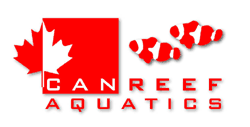Originally Posted by tmz
(Post 21610696)
It's certainly seems counter intuitive to dose nitrate or another nitrogen source but it may make sense.
The redfeild ratio is rather useless as a guide other than to offer perspective on the general en masse proportions of carbon(C)106:N) 16: 1 P in ocean plankton. Organisms may approximate those levels but some including some bacteria vary significantly . Even if food put in the tank is close to those proportions, the activity in the tank may not use them in those proportions. All in all, trying to use the redfield ratio to obtain a generalized optimal N to P ratio seems convoluted. Using tank levels of N and P vs natural seawater levels seems smarter and more direct.
To clarify the idea as to why dosing N might be necessary, a brief look at the three major nutrients coming in and going out of the bio available mix in the tank may be helpful
Organic carbon coming in for the most part with foods can be used for energy or sunk in refractory( non bio available) organics like humic and fulvic acids ;some may also be contributed by photosynthesis. So, the amount coming into the tank is not really the bio available amount in the tank.
In many tanks it seems there is a shortfall as N and P levels climb. If there was enough organic C, the bacteria would use up the N and P too and tank levels would approximate nsw levels ( PO4 ca .005ppm and NO3ca. 0.2ppm) more often than they do. This imbalance is the basis for organic carbon dosing( vinegar, vodka, pellets, sugar, etc)
Unfortunately, hobby level measurement of organic carbon is not possible. Even high level analyses with $ 50 K analyzers don't really tell you what organics are present and whether they are bio available. So, we use No3 and PO4 as sort of a surrogate measure for nutrients, often ignoring organic carbon.
The proportion of N in and N out varies vis a vie the proportion of P in and P out too. The bacteria , consume C,N and P for food( ie, they assimilate them) and in turn are exported primarily by skimming . Even if we assume they have a perfect 116C to16Nto1 P biomass and the food into the tank also has these exact proportions,more N will be exported than P.
Anaerobic activity where the bacteria use NO3 for oxygen when free oxygen is used up exports extra N . NO3 is reduced to N as the oxygen is taken ;some of the N which binds to other N forming N2 which bubbles out into the atmosphere. How much of this occurs is variable from tank to tank but it does deplete nitrogen in addition to the nitrogen assimilated by the bacteria as biomass;there is no other such exit for P .
This is why many use gfo or other adsorbents and or precipitants for PO4 along with organic carbon dosing.
Sometimes, N levels at 0 may induce some coral paleness, perhaps from an N deficiency for the zooxanthelae or the coral itself. Some think adding extra N via sodium nitrate or calcium nitrate will remedy that and also help the bacteria to reduce more P. Very plausible positions,imo. Some ,including me prefer to add extra N via aspartic acid and amino acid which also adds some organic carbon.
|

